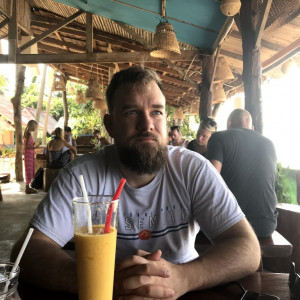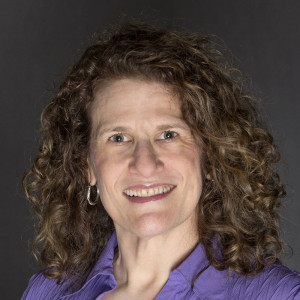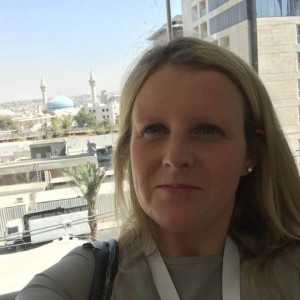How did you get started with remote work?
Interview with Haley, a VP of Operations shares her stellar remote work strategies
After leading teams for Apple Retail for five years and with a baby at home, it was time for a change.
I loved tech and working with people but knew that the irregular hours would increase stress and limit family time.
I didn’t begin my job search by looking for remote work. I read through job descriptions to find a skillset and passion match. Customer success seemed like a great fit, but as a relatively new job area, most roles were available outside of DC.
That led me to my first remote job at IDoneThis, a team of five that quickly taught me key principles of remote work:
- Structure time intentionally
- Writing > talking: take the time to structure your thoughts to communicate more clearly
- Process > outcome: everything happens intentionally
- Understand how each team member wants to collaborate
- Share what you’re working on proactively to create visibility and make other people’s lives easier
- Make time to learn and think
- Have fun at work
One of the things that struck me the most was our CEO’s belief in the importance of breaks. I went up to the office for a week of training, and after asking what I like to eat, took me to a different ramen restaurant in NYC each day, then proceeded to come back to the office and play video games and/or take a nap. He worked really hard but got his rest in, too.
Without saying “take your breaks” he demonstrated that it’s ok, even good, to be a human with human needs and create a work-life balance that makes sense for you.
Haley has figured out the way she works best as a VP of Operations. See her principles of remote work and the unique advice a former boss gave her about breaks.
Read full interview from Interview with Haley, a VP of Operations shares her stellar remote work strategies.
Company Interview with Tricia, CEO of BELAY
If your team is new to remote work, one of the first ways to get your team up to speed is to start with leadership.
Leadership must be on board with promoting and utilizing the tools your team will need to complete their task while away from the physical office.
When it comes to tangible tools, aligning with your IT team and introducing your employees to chat communication tools such as Slack, video conferencing such as Zoom and project management platforms like Asana will become important to help your team stay connected.
For 10 years, BELAY has been a 100% remote work company. CEO, Tricia, shares the tools that keep them thriving and how boundaries & expectations contribute to their success.
Read full interview from Company Interview with Tricia, CEO of BELAY.
Interview with Ascencia, a content marketer, and avid gig economy professional
During college, I was already familiar with the gig economy and the possibility of earning money through the Internet. I had accounts on Gengo (translation service), Fiverr, Zerys (writing service), and Upwork. I did several gigs on Gengo and Zerys, and earned about almost $200 in total.
But making a career out of remote work wasn’t my initial plan. After I finished my bachelors’ degree and a year-long traditional office internship, I was offered a full-time position at that company. But I rejected the offer because I was planning to pursue my masters’ degree.
The exact transition was a blur, but one day I remembered that I had an Upwork profile. It was already approved for two years, and it was just sitting there since I didn’t have time to apply for jobs or do the actual work.
So I decided with the free time I had, I could do one or two projects there. However, I didn’t have any specific experience besides the subjects I learned in college and the internship experience as an IT QC staff. Thankfully, there’s a position called virtual assistant on Upwork.
A virtual assistant, just like its name, does every kind of job you could imagine, virtually. It’s the perfect way to learn new skills while earning money, just like an internship. I started at $4/hour. A meager rate, but a pretty decent one if you convert it to Indonesian Rupiah. With my first two clients, I did English to Indonesian translation and Trello/WordPress content management. I’m still working with them now.
About ten projects later, I realized I was attracted to content marketing. I’ve always loved reading, writing, and languages in general. It’s only logical for me to work in content eventually.
Now, 18 months since my first project on Upwork, I’ve specialized myself in content marketing and quadrupled my hourly rate.
A forgotten two-year-old Upwork account allowed Ascencia to become a content marketer—see how the gig economy has offered her an alternative path to success.
Read full interview from Interview with Ascencia, a content marketer, and avid gig economy professional.
Interview with Jake, a customer success manager for Atlassian
I was working with Atlassian/Statuspage for a few years and was getting burnt out on the San Francisco lifestyle.
I wanted to keep my job, but I didn't want to live in San Francisco anymore.
So I started looking into the possibility of working remotely. I'm thankful to have a remote-friendly boss and to work for Atlassian—they've been taking a lot of steps to be more remote focused.
Jake was burned out on the San Francisco lifestyle—see how he transitioned from working in-office to working remotely for a remote-friendly company.
Read full interview from Interview with Jake, a customer success manager for Atlassian.
Interview with Artur, an engineer who found purpose as an Intrapreneur
At some level, the idea to work remotely was obvious to me. I started my career as a web development freelancer and working from home was the only option at 15 (and a bit illegal in Poland).
After learning hard lessons about what not to do in your own business, I moved to Samsung Poland, which was a radically different experience. I was enamored by beautiful office space, benefits, and the scale. From that experience, I knew that I wanted to work for big companies.
Me being me, I negotiated my salary down (how often do you hear that?) in exchange for being able to work remotely 80% of full time, which allowed me to travel a bit. I never spent a day working full-time office-bound.
What ultimately launched me on a quest to find a new and remote position was the drive to work on more significant problems, having more impact and working on a product that people will recognize. I wanted "in" on the Silicon Valley startup culture (which since has lost much of its luster), and I wanted to work on the "hip" things.
Also, I did not want to leave Poland permanently. My family is here, and I didn't want my grandparents to lose their only relative.
With my prior WordPress experience, Automattic was a perfect fit. I spent a lot of time preparing and leveling up my skills to apply. You can read a detailed account of that process here. It also includes a guide to using sandwiches as a competitive advantage.
I got hired one week before the whole company met in Park City, Utah. It was 3.5 years ago, and it's as exciting now as it was then.
Artur realized entrepreneurship wasn't for him—see how he carves out his creativity and purpose as a remote Intrapreneur at Automattic.
Read full interview from Interview with Artur, an engineer who found purpose as an Intrapreneur.
Interview with Meryl, a digital marketer and master of home office organization
After having my second child in 1999, I enrolled in an online program at New York University to earn a certificate in internet technologies. At the time, I worked for a communications company.
The plan was to work toward a career in web design. While I loved web design, I had a terrible eye for design. Still, I enjoyed reading a weekly e-newsletter about web design. It had a contest where you can submit an article to win a copy of Photoshop.
I won! That started my writing about web design that led to more writing work. Work kept coming in, morphing from writing to marketing. I did all of this at home outside of work hours. By 2005, I left my corporate job to become a full-time remote freelance digital marketer.
Meryl K. Evans is skilled at creating a home office that leads to remote work flexibility. See her advice for creating a successful workspace, and hear about her journey into freelancing.
Read full interview from Interview with Meryl, a digital marketer and master of home office organization.
Interview with Molood, a CEO who shares how minimalism has improved her remote work experience
Technically, when I started working in my first job, I realized that despite everything being designed for collocation, every team I was working with was distributed. My first leadership role was to manage a software integration project in Sweden, Canada, Serbia, China, and the US.
Looking back, even in student projects, I always optimized the work processes to be remote-friendly so that team members who had traveled to their home countries for holidays could continue to contribute to the course projects.
In essence, I think I simply accepted that remote work and remote collaboration was the reality of our world and did not spend much energy resisting it like many others do.
Instead, I embraced it and became very good at it.
As CEO and Founder of Remote Forever, Molood has made a career in teaching individuals and companies how to work remotely effectively. See how embracing a minimalist lifestyle has caused her to excel.
Read full interview from Interview with Molood, a CEO who shares how minimalism has improved her remote work experience.
Interview with Nathan and Connor, owners of Freeeup
It was back in 2012 or so when we were building our first eCommerce business. We had just graduated from college, and we were reaching a point in the business where we needed to start bringing on more people to help grow the company. We already had a core team of full-time and part-time team members, and we were looking to expand that team without breaking the bank.
It was around this time that we were introduced to the idea of hiring remotely from another entrepreneur that we had met. He tipped us off to a site called Odesk (now Upwork).
We started posting jobs on the platform and began interviewing. Eventually, we quickly became addicted to building up a team of remote talent from all over the world to help as we continued to scale the business.
After years of hiring remotely with our first business and running into many frustrations, we decided there must be a better way, and we started FreeeUp.
Thinking of creating your own remote startup? See how Nathan and Connor built a successful and effective remote team from scratch.
Read full interview from Interview with Nathan and Connor, owners of Freeeup.
Interview with Maggie, a senior product manager at HubSpot
My husband and I were over in Canada for almost ten years, and when I was pregnant with my second son, we decided to move back home to Ireland.
I was lucky to work for a fantastic team at Expedia, where my manager at the time didn’t blink an eye at allowing me to move home and work full time remotely.
Remote work allows Maggie to live in a small town and excel in her career. Hear about how she stays professionally connected, and her essential career advice for remote workers.
Read full interview from Interview with Maggie, a senior product manager at HubSpot.
Interview with Ben, a web developer who freelances from home
I've always been interested in web development. When I was younger, I applied for a job advertised on a local version of Craigslist. The guy didn't have an office, and was only a small company, so I ended up working from home because of that. Eventually the money ran out, and I got an office job (which I hated).
A little more than a year after that, I found myself downsized, and with more than a month of severance and vacation paid out, with a little time on my hands. I did piecemeal work as a freelancer, and was lucky enough that the work kept coming.
Learn the tips and tricks Ben uses to stay productive while working remotely on a hybrid team
Read full interview from Interview with Ben, a web developer who freelances from home.








